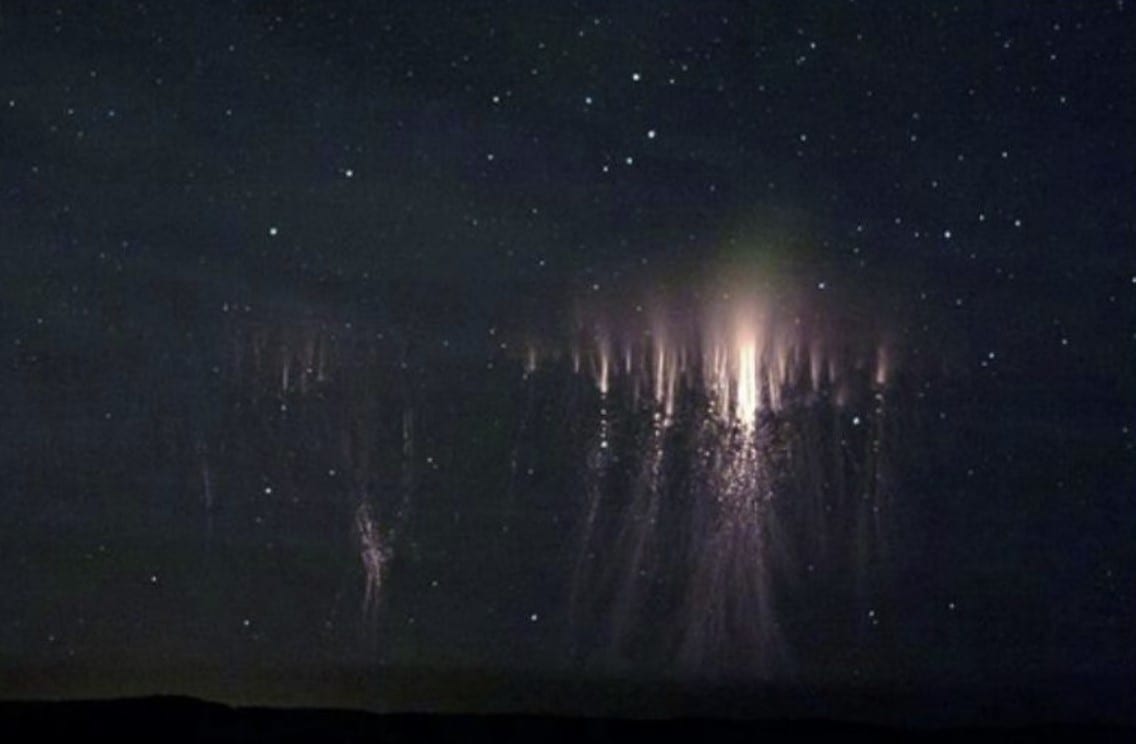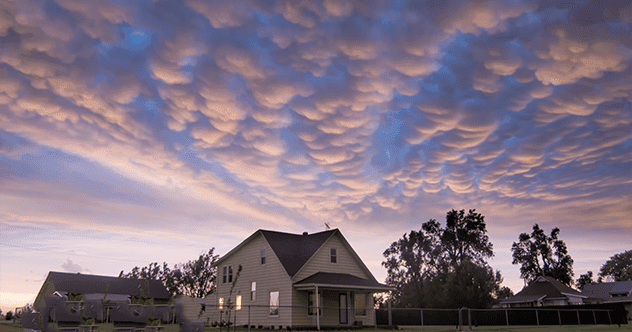Weather has always been a reliable source of discussion, humor, and even art. From Mark Twain’s aversion to it in literature to George Carlin’s comedic takes, everyone has something to say about the weather. But beyond the everyday forecasts, there’s a world of strange and unusual weather-related phenomena that continue to surprise scientists and fascinate the public.
While meteorology has dedicated itself to studying the effects of wind and sun, new and bizarre weather events keep emerging. This list explores ten of the most astonishing weather phenomena, some of which are literally out of this world.
Mammatus Clouds
First observed in the early 20th century, mammatus clouds weren’t officially classified until 2017 by the World Meteorological Organization. Their name comes from their resemblance to cows’ udders.
These clouds form upside-down, hanging from the undersides of various cloud types like cirrocumulus and altocumulus. While some believe they signal an approaching tornado, mammatus clouds don’t always indicate severe weather, though they often accompany thunderstorms. They form when moist, cool air sinks into drier, warmer air, creating an eerie and unmistakable appearance.
Steve
What’s purple and appears like a giant, unraveling ribbon in the sky? The answer is Steve, a phenomenon first spotted by amateur meteorologists known as The Aurora Chasers. They named it after a creature in the movie *Over the Hedge*.
Initially thought to be a proton aurora, University of Calgary professor Eric Donovan discovered Steve wasn’t an aurora at all. Satellite data showed a significant temperature increase 186 miles above the Earth’s surface, with a hot ribbon of gas flowing westward at high speed.
Steve, now known as Strong Thermal Emission Velocity Enhancement, is a common yet previously unnoticed skyglow. Its exact origin remains unknown, making it a new kind of optical phenomenon.
Stormquakes
Stormquakes are a new geophysical phenomenon caused by the immense power of severe weather. Hurricanes and intense storms can produce vibrations in the ocean floor, as powerful as a minor earthquake (3.5 on the Richter scale).
Wenyuan Fuan and his team at Florida State University found that these storms transfer energy to Earth’s crust through powerful waves, resulting in intense seismic activity that can last for days. Over 10,000 stormquakes have been recorded along continental shelves off New England, Florida, and other coastal regions.
Landfalling Droughts

Landfalling droughts begin at sea but travel onto land, causing even more severe conditions than typical droughts. This discovery offers hope for better drought prediction, similar to weather forecasting.
Stanford University scientists believe that tracking atmospheric pressure patterns can help predict these droughts months in advance. This is crucial, as droughts lead to crop failure, water supply reductions, and significant economic and ecological damage. Early warnings could allow for protective measures against these devastating effects.
Surfactants’ Effects on Sea Spray

Another recent discovery involves how surfactants affect sea spray, potentially improving hurricane forecasting. Research from Nova Southeastern University highlights that surface-active biological materials, like coral reefs, and anthropogenic materials, like oil spills, can enlarge sea spray distribution.
These materials act as ‘fuel’ for hurricanes, intensifying the storms. Surfactants reduce the interfacial tension between air and water, increasing sea spray generation, which in turn affects tropical cyclone thermodynamics. This new understanding may help improve hurricane intensity forecasts.
Solar Flare Phenomenon
Weather isn’t limited to Earth; it happens in space too, largely driven by the sun’s energy. Solar flares occur in distorted areas of the sun’s magnetic field, where magnetic loops reconnect, releasing tremendous amounts of magnetic energy.
These eruptions, known as Corona Mass Ejections (CMEs), send magnetic energy into space. Predicting solar flares is now more accurate, thanks to a verified 3-D model. This helps protect technology, aircraft, satellites, and the Earth itself from the destructive effects of space weather.
Space Hurricanes
High above Earth’s polar regions, vortexes of plasma spin like hurricanes. These space hurricanes aren’t unique to Earth; they occur across the solar system and the universe.
Forming around low-pressure zones and electrically charged particles in the ionosphere, space hurricanes can be enormous, measuring hundreds of kilometers across. These storms can disrupt satellite transmissions and erode technology, even during relatively calm space weather.
Green Ghost

Transient luminous events (TLEs) are phenomena that occur above thunderstorms, known by names like sprites and elves. In 2020, Thomas Ashcraft discovered a new one: the Green Ghost. Triggered by strong lightning strokes, the Green Ghost appears as a green afterglow above larger sprites.
Although initially met with skepticism, more and more scientists are convinced of the Green Ghosts’ reality. The green color may be due to the excitation of oxygen molecules, similar to auroras and airglow, adding to the mysterious nature of weather phenomena.
Antimatter
Thunderstorms are even more energetic than previously thought. Researchers discovered that lightning and electrical fields above storms produce gamma radiation detectable from space. NASA’s Fermi Gamma-ray Space Telescope revealed that thunderstorms also produce antimatter beams.
These antimatter beams, with an energy equivalent to an electron-positron annihilation event (511 keV), are created when powerful electrical fields produce an avalanche of near-light-speed electrons. This finding highlights the extreme energy processes within thunderstorms.
“A Whole Different Thing”
Saturn’s weather includes a newly discovered type of storm called “a whole different thing,” observed near the planet’s north pole in 2018. This adds to the two previously known types of storms on Saturn: smaller bright clouds and the larger Great White Spots.
While the source is believed to be clouds of water deep below the planet’s upper cloud cover, the specifics of this new storm type remain mysterious. Planetary scientist Robert West suggests it’s distinct from the Great White Spots, with an unknown origin, further emphasizing the complexity of Saturn’s atmospheric dynamics.
From strange clouds to antimatter beams, the world of weather continues to reveal bizarre and fascinating phenomena. These discoveries not only expand our understanding but also highlight the importance of continued research into the forces that shape our planet and the universe.
What do you think about these strange weather phenomena? Let us know in the comments below!










